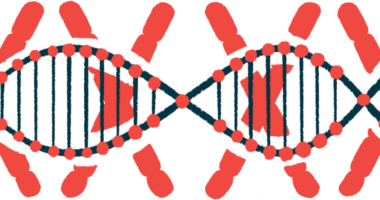Pirenperone Shows Promise as Treatment in Fragile X Mouse Model
Beneficial effects linked to significant increase in FMR1 gene activity

Treatment with a small molecule called pireperone rescued cognitive and behavioral impairments in a mouse model of fragile X syndrome, making it a potential therapy candidate for the rare genetic disorder, a study reported.
Pireperone’s beneficial effects were likely associated with a significant increase in the activity of the FMR1 gene — which is deficient in fragile X — as observed in lab-grown brain cells from healthy rats.
“This approach and study may offer chances for novel therapeutic development against [fragile X syndrome] and can be expanded to other [brain and spinal cord] disorders that also need effective treatment,” the researchers wrote, referencing their work in screening more than 900 genes to identify this small molecule.
The study, “Pirenperone relieves the symptoms of fragile X syndrome in Fmr1 knockout mice,” was published in Scientific Reports.
Hunting for a new therapy
Fragile X is caused by mutations in the FMR1 gene, which provides the instructions to make the FMRP protein. FMRP regulates the activity of genes involved in nerve cell communication.
Such mutations lead to deficient FMRP production, triggering the cognitive, developmental, and behavioral symptoms found in people with fragile X.
Here, a research team in South Korea sought new ways to identify a potential treatment for fragile X.
The team hypothesized that they could find a good therapeutic candidate by screening for small molecules with the potential to normalize the altered gene activity profile associated with FMRP deficiency.
To do that, they used a connectivity map — a method and database that helps to identify small molecules that promote or revert the gene activity signature of interest.
The fragile X-associated signature was obtained through the analysis of gene activity data from eight fragile X patients and 15 healthy people, who served as controls. Among the 924 genes analyzed, 42 had their activity levels altered — 17 increased and 25 decreased — and were selected as the disease-associated profile.
Of the 5,000 small molecules included in the database, 25 showed potential to revert the fragile X-associated signature, and 11 of them were already approved in the U.S. for other indications.
One of those molecules, called pirenperone, was selected for further experiments based on its known ability to easily penetrate the brain and to promote antipsychotic effects. It is a selective blocker of serotonin, a key molecule in nerve cell communication implicated in autism spectrum disorder, whose most common single-gene cause is fragile X.
In lab-grown neurons from the cerebral cortex, or the outermost layer of the brain, of healthy rats, treatment with pirenperone was found to significantly increase the activity of the FMR1 gene, which also is regulated by FMRP. The activity of some other genes included in the disease-associated profile also was rescued.
“The results suggest that the [activity] levels of genes in cortical neurons which were [altered] and causative for [fragile X] were counter-regulated by pirenperone,” the researchers wrote.
The team then evaluated whether pirenperone could ease disease-associated cognitive and behavioral problems in a mouse model of fragile X with a deficiency in the FMR1 gene.
While mice with fragile X-like disease showed hyperactivity, one of the most significant features of this mouse model, this symptom was rescued with pirenperone treatment.
Impulsive behavior, a common feature of fragile X patients, also was reduced after pirenperone administration, reaching levels similar to those observed in healthy animals.
In addition, the memory and learning capabilities of the mouse model benefited from the treatment. Before treatment, these were reduced relative to healthy mice, but were normalized after treatment.
These results suggest that pirenperone is a new drug candidate for [fragile X]
Overall, pirenperone was seen to increase FMR1 gene activity, which suggests it can boost FMRP production, helping to regulate nerve cell communication and rescuing some of the behavioral deficits associated with the disease.
“These results suggest that pirenperone is a new drug candidate for [fragile X], which should be verified in future studies,” the researchers wrote.
“Even though there are still many questions to comprehend the mechanism of pirenperone as a potential drug candidate for [fragile X], we assume that the current study will provide new insights into discovering effective drug candidates for the disorder,” they added.







